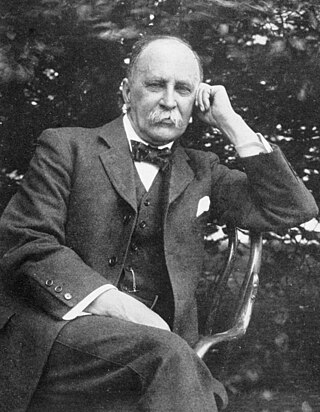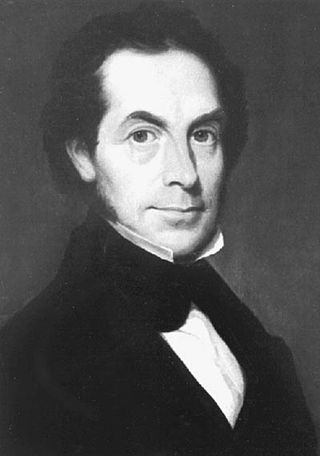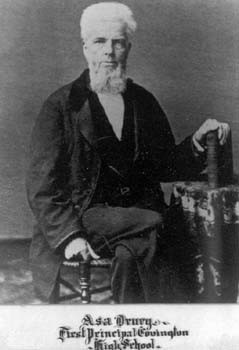
Sir William Osler, 1st Baronet, was a Canadian physician and one of the "Big Four" founding professors of Johns Hopkins Hospital. Osler created the first residency program for specialty training of physicians, and he was the first to bring medical students out of the lecture hall for bedside clinical training. He has frequently been described as the Father of Modern Medicine and one of the "greatest diagnosticians ever to wield a stethoscope". Osler was a person of many interests, who in addition to being a physician, was a bibliophile, historian, author, and renowned practical joker. Outside of medicine, he was passionate about medical libraries and medical history and among his achievements were the founding of the History of Medicine Society, at the Royal Society of Medicine, London. In the field of librarianship he was instrumental in founding the Medical Library Association of Great Britain and Ireland, the Association of Medical Librarians with three others, including Margaret Charlton, the medical librarian of his alma mater, McGill University. He left his large history of medicine library to McGill, where it continues to exist as the Osler Library.

Samuel Thomson was a self-taught American herbalist and botanist, best known as the founder of the alternative system of medicine known as "Thomsonian Medicine", which enjoyed wide popularity in the United States during the 19th century.

Jeremiah Morrow was a Democratic-Republican Party politician from Ohio. He served as the ninth governor of Ohio, and was the last Democratic-Republican to hold that office. He also served as a United States Senator and a member of the United States House of Representatives from Ohio. He also served in the Ohio Senate.

William Bennett Bean was an internist, medical historian, teacher and collector.

Charles Daniel Drake was a United States senator from Missouri and Chief Justice of the Court of Claims.

Charles Caldwell was a noted 19th-century U.S. physician who is best known for starting what would become the University of Louisville School of Medicine and is one of the earliest proponents of Polygenism in the United States.

Doctor Thomas Hinde was Northern Kentucky's first physician, a member of the British Royal Navy, an American Revolutionary, personal physician to Patrick Henry, and treated General Wolfe when he died in Quebec, Canada.

Samuel David Gross was an American academic trauma surgeon. Surgeon biographer Isaac Minis Hays called Gross "The Nestor of American Surgery." He is immortalized in Thomas Eakins' The Gross Clinic (1875), a prominent American painting of the nineteenth century. A bronze statue of him was cast by Alexander Stirling Calder and erected on the National Mall, but moved in 1970 to Thomas Jefferson University in Philadelphia.
The University of Cincinnati Academic Health Center (AHC) is a collection of health colleges and institutions of the University of Cincinnati, Cincinnati, Ohio. It trains health care professionals and provides research and patient care. AHC has strong ties to UC Health, which includes the University of Cincinnati Medical Center and West Chester Hospital.
Dr. William Patton Thornton was a physician, educator, author, and politician.

Reuben Dimond Mussey, Sr. was an American physician, surgeon, vegetarian and an early opponent of tobacco. He was the fourth president of the American Medical Association.

Jonathan Stokes was an English physician and botanist, a member of the Lunar Society of Birmingham, and an early adopter of the heart drug digitalis.

Elisha Bartlett was a medical doctor, professor and poet who served in the Massachusetts House of Representatives and as the first mayor of Lowell, Massachusetts.
Mays Lick(a.k.a.Mayslick, originally known asMay's Lick) is a census-designated place and unincorporated community in Mason County, Kentucky, United States. As of the 2020 census, it had a population of 252.

Asa Drury (1801–1870) was an American Baptist minister and educator primarily teaching at Granville Literary and Theological Institution in Granville, Ohio, and the Western Baptist Theological Institute in Covington, Kentucky, and establishing the public schools in Covington. He is best known for his antebellum abolitionist views and his role in establishing the Underground Railroad in Ohio.

Samuel Prescott Hildreth (1783–1863) was a pioneer physician, scientist, and historian, authoring numerous scientific and historical works. His history books are largely based on first-person accounts and primary documents, providing insight into the early settlement of Marietta, Ohio and the Northwest Territory and the lives of early pioneers.

William Goforth was an American politician and physician in Ohio and Louisiana. He administered the first smallpox vaccines and conferred the first medical degree in the frontier west, and was a delegate to write the first constitution of Louisiana. He also excavated a large number of megafauna bones at Big Bone Lick in Kentucky.

The American Osler Society is an organisation dedicated to the history of medicine and focuses on the "life, teachings, and ethical example of Sir William Osler". It works in co-operation with the Osler Library of the History of Medicine at McGill University and consists of a group of physicians, medical historians, and other related professions united by "the common purpose of keeping alive the memory of Sir William Osler".

Mark Edwin Silverman MD MACP FACC, was an American cardiologist, medical historian, medical educator and author of more than 200 medical articles and a number of books, who founded the cardiology program at Piedmont Hospital in Atlanta, Georgia.
Henry Willis Baxley was an American physician who helped to found the Baltimore College of Dental Surgery in 1839. This college has been variously described as the first dental college in the United States, in the world, and in North America.

















